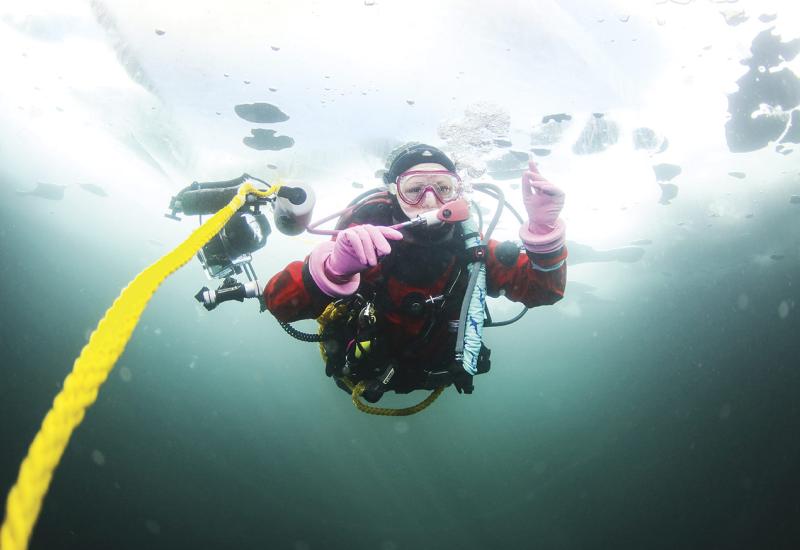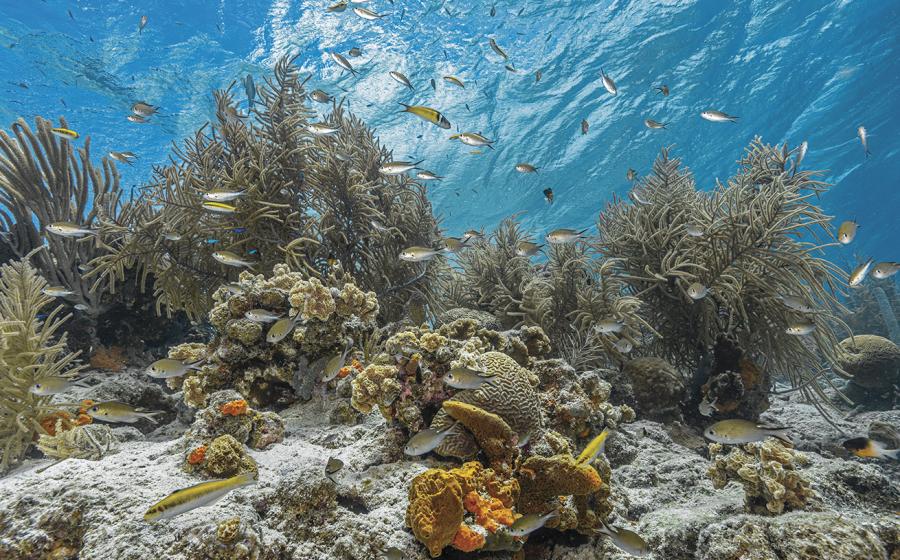5 Best Places For Advanced Scuba Diving In The Pacific & Indian Oceans - 2017 Readers Choice Awards
Our annual Top 100 Readers Choice Awards are based on your real-world dives, and they let us take that journey right along with you. Since 1994, we’ve been presenting our readers’ picks for the best scuba diving in the world in our annual Top 100 Readers Choice Awards. It’s a feature that we love to put together, because we consider the results of our annual Top 100 survey a way for magazine readers, fans and online followers to share their most remarkable moments underwater. Below you'll find the winning destinations for the Best Advanced Diving in the Pacific and Indian Oceans, and offer you a magical glimpse at your next scuba diving vacation.
How the Winners are Chosen:
Thousands of Scuba Diving subscribers and online users rated their experiences at dive destinations in a variety of categories on a scale from 1 to 5. Final scores are an average of the numerical scores awarded. A minimum number of responses was required for a destination to be included in these ratings.

Yann HubertFrench Polynesia took the #1 spot in our Top 100 Readers Choice Awards for Advanced Scuba Diving in the Pacific and Indian Oceans.
1. French Polynesia
Best Advanced Diving in the Pacific and Indian Oceans
The volcanic islands of French Polynesia — of which Tahiti is one of the most well-known — offer stunning underwater topography. For scuba divers looking for a rush, drift diving through underwater valleys and passes is the way to go. Want a dive experience with more teeth? Sharks feeding is common on several islands, but if you prefer the encounter without wranglers and bait, it's easy, as sharks are prevalent throughout the French Polynesian islands.
Dive Conditions
- Visibility: Consistently exceeds 100 feet
- Water Temperature: High 70s to mid-80s (Fahrenheit) depending on the season
- When To Go: Year-round, but high season, which runs from May to October, brings higher prices
- What To Wear: A 2mm or 3mm wetsuit will provide ample protection
2. Indonesia
Best Advanced Diving in the Pacific and Indian Oceans
Indonesia is home to thousands of varieties of fish and coral. It's impossible to experience all of Indonesian scuba diving in one trip — muck diving for strange critters, testing your fish ID skills to the limit, exploring the heart of the Coral Triangle, scuba diving 24/7 from an over-water bungalow, or cruising from Bali to Komodo — so you've got a pre-made excuse to come back for more.
Dive Conditions
- Visibility: Highly variable, but usually 50 to 100 feet
- Water Temperature: Typically in the low to mid-80s (Fahrenheit), though cold upwellings can reduce water temps in some areas
- When To Go: The dry season runs May through September, the wet season November through March, and expect hot and humid conditions year-round
- What To Wear: A 3mm will be sufficient for most divers
3. Galapagos Islands
Best Advanced Diving in the Pacific and Indian Oceans
Training trumps instinct when it comes to the down- currents of the Galapagos Islands. There, amid the intersection of the Humboldt Current, Peru Coastal Countercurrent and the South Equatorial Current, it’s safe to plan for the plan getting scrapped as current directions change quickly. When that happens, skills come into play — knowing when not to fight the flow and let it have its way might make all the difference.
Dive Conditions
- Visibility: Usually averages around 75 feet, but can range from just a few feet to over 100 depending on conditions
- Water Temperature: Varies between islands from 65 to 80 degrees Fahrenheit, but can drop to the 50s at depth
- When To Go: Diving is best between June and Dec., with the bigger stuff peaking Sept. through Nov.
- What To Wear: It's cold water year-round, a 7mm with gloves and hood is the way to go, or perhaps a drysuit if you have one
4. Socorro Islands
Best Advanced Diving in the Pacific and Indian Oceans
One of the holy grails for adrenaline-seeking divers, the Socorros are only reachable by liveaboard. The reefs of this remote location are teeming with life and offers amazing encounters with large animals such as humpback whales, mantas and of course, sharks. The question here isn't if you will see sharks, but what kind of sharks will you see? Depending on the day you could encounter hammerheads, silvertips, whitetips, threshers, silkies, Galapagos or even tiger sharks.
Dive Conditions
- Visibility: 50 - 160 feet
- Water Temperature: 70 to 82 degrees Fahrenheit
- When To Go: The seas are at their calmest Nov. through May, although the best time to see humpback whales is late Jan. through April
- What To Wear: If you dive during the winter months, we recommend bringing along a 5mm or 7mm wetsuit
5. Palau
Best Advanced Diving in the Pacific and Indian Oceans
Palau is made up of more than 350 islands and situated in a biodiverse intersection of the Pacific Ocean and the Philippine Sea. Scuba divers can find a variety of experiences in this diverse island chain including big pelagic encounters, tranquil coral gardens, current-swept drop-offs and a collection of World War II wrecks.
Dive Conditions
- Visibility: More than 100-foot visibility is not uncommon
- Water Temperature: High 70s to mid-80s (Fahrenheit) year round
- When To Go: Palau's diving is great year-round, but Jan. through May tends to have the biggest crowds
- What To Wear: A 3mm wetsuit is adequate for most scuba divers










